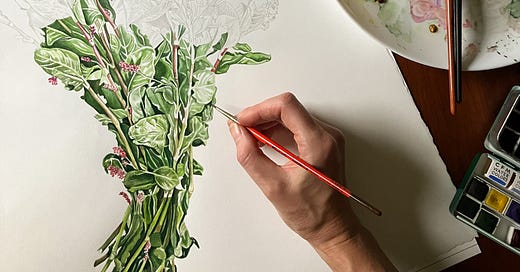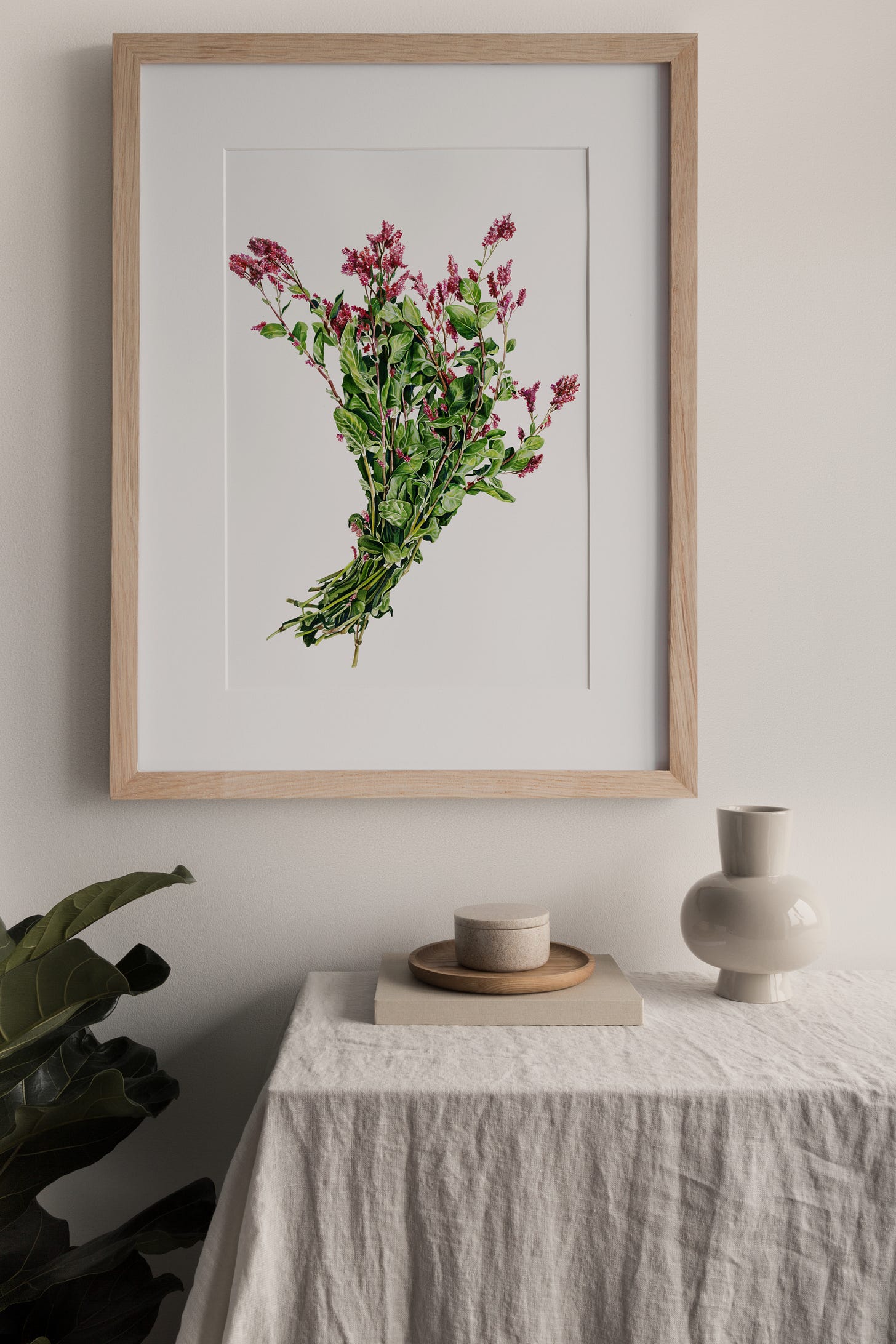I think I first discovered what indigo was when I learned about shibori tie dye. There was a real fashion wave with shibori fabric and clothing about ten years ago. Lots of DIY kits and workshops on how to create with this plant. I was so taken by the pure deep blue that it produced. Fast forward to a few years ago and a mutual friend told me about Brittany’s farm here in Richmond, Virginia, La Botanica, where she grows and harvests fresh indigo. I hadn’t realized it’s such a gorgeous plant on its own before going through the lengthy process of becoming a dye. I also hadn’t realized that Richmond has just about the perfect climate for growing it. Fresh indigo has little red/purple flowers when in bloom. When it’s ready to harvest, you actually use the dried leaves to extract the dye, not the buds. I got to interview Brittany last year about her relationship with the plant. When asked what her favorite part of growing indigo was, her answer, “Literally, I like picking a leaf and watching it turn blue right before my eyes. What a way to go.” She also talked about the cultural significance of the plant and how historically it has played a big role in different places around the world including Korea, India, Japan, Nigeria, Mali and South Carolina, just to name a few.
What struck me also, about what Brittany shared about the plant, is that you receive its gifts after it has died. The dye can only be made from the picked and dried leaves. There is a poetic beauty in this plant’s ability to keep producing offerings well after its life has ended. The combination of its cultural significance, dye making abilities, and just sheer aesthetic beauty made me want to paint it.
I got to go out to La Botanica and harvest some of the flowering indigo with Brittany early last summer. I then brought it home and photographed it while still fresh, using this as my muse for my future painting.
The creating of this painting was a nice slow one. Sometimes my work is more singularly focused and I am only working on one piece consistently for hours and hours a day until I am done. This one was spread throughout the course of a few months, worked on in between other projects. This indigo painting became what I did in my free time, outside of other creative commitments and collaborative projects.
I started with a very detailed pencil sketch as you can see here above. As I have mentioned previously, my favorite pencil for the under layer is 2H because of its lightness. Due to all of the shades of greens and highlights on the rippling leaves, I really filled in as much as I could with pencil so my eyes would have an easier time when going to apply the layers of watercolor over top.
I’ve found green to be one of the trickiest colors to reproduce on the page. There are so many shades of green found in nature, and to pick up on and go between them all is really a skill I am still learning. Indigo tends to have naturally more blue-green leaves. Case for Making makes a beautiful green called cypress green that I ended up using a lot of for this piece.
There is something really grounding and centering about painting plants. They just offer an aliveness that is felt within each brushstroke. Every leaf has a different personality and a different relationship to the light reflecting off of it. It’s like they are all dancing and having a conversation next to one another.
If you happen to be local to Richmond, check out La Botanica and the gorgeous flower arrangements and indigo dye they have to offer.
This piece is offered as a limited edition print in two sizes, and 10% of sales goes back to La Botanica Farm. The original painting is also for sale.
I hope your May has been full of flowering, in all of its many forms.
xo, Molly






